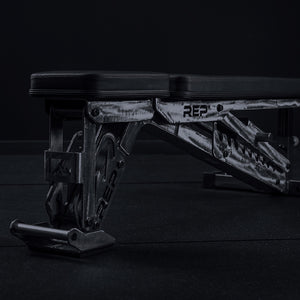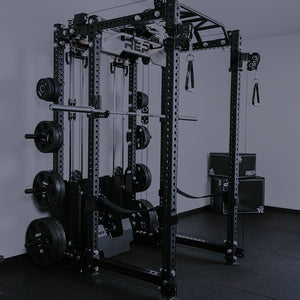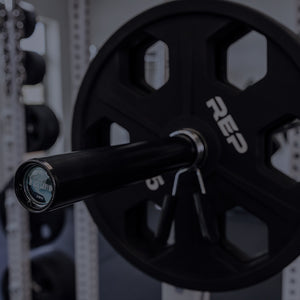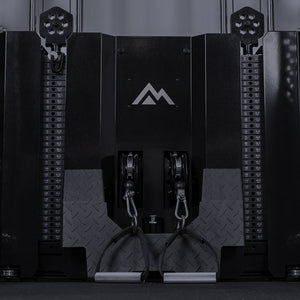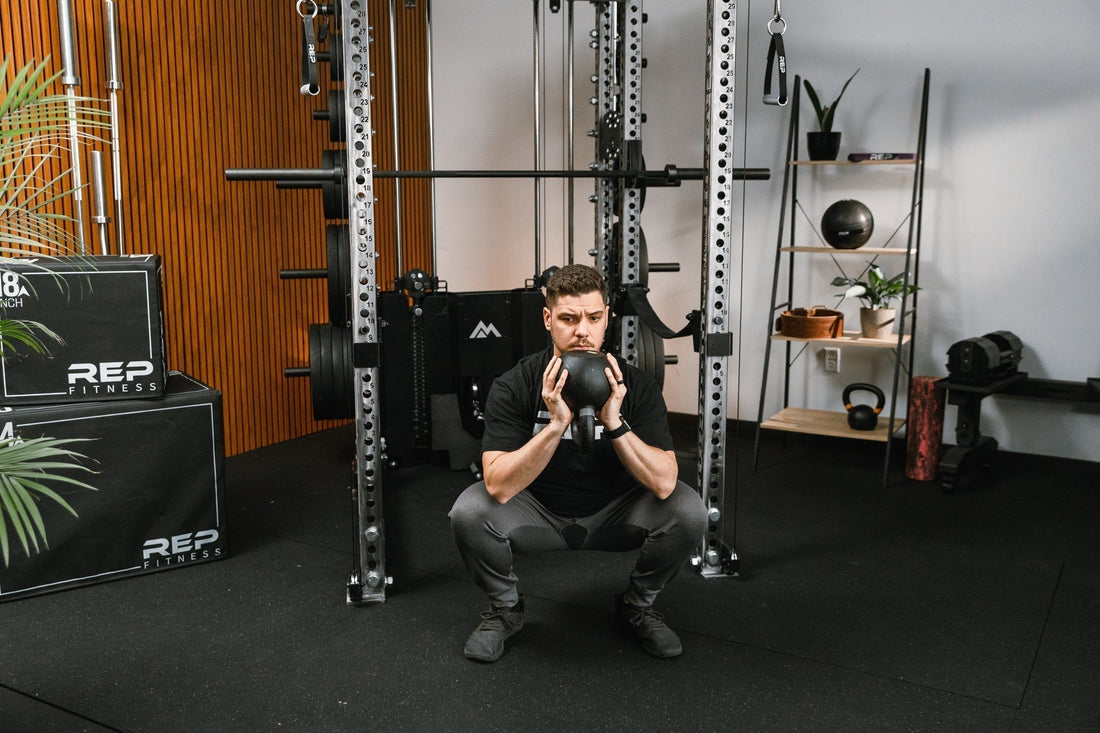
The squat choice of legends.
The goblet squat is simple: grab a kettlebell or dumbbell, hold it to your chest, and squat. But don’t let the ease of motion fool you— this move fires up your legs, glutes, and core while fixing your posture and mobility in the process. Here’s how to do it right.
What Is A Goblet Squat?
The goblet squat is a powerhouse lower-body exercise that combines strength, stability, and mobility. You hold a dumbbell or kettlebell close to your chest (like it’s your prized possession), drop your body into a deep squat with your chest up and core engaged, and then power back up. It’s a go-to, beginner-friendly move for building leg strength without beating up your joints.
According to Adam Kemp, a professional basketball player in Europe and an ISSA-certified personal trainer, goblet squats work the following muscles:
-
Quadriceps (front of the thighs, for that strong, sculpted look)
-
Glutes (because powerful legs need a solid foundation)
-
Hamstrings (the underrated MVPs of leg strength)
-
Core (to keep you balanced and locked in for every workout)
-
Adductors (inner thighs, helping with stability and control)
“Goblet squats are one of my favorite leg exercises because they’re simple, effective, and safe. Whether you're new to strength training or an experienced lifter, they’re a great tool for building lower body strength, improving mobility, and reinforcing good squat form,” Kemp says.
How to Do A Goblet Squat
The goblet squat is simple, but it’s a game-changer. It’s a solid blend of strength, control, and mobility all in one movement, and the steps are fairly easy.
Grab the Right Equipment
First, you need a weight of your choice. A dumbbell, kettlebell, or even a medicine ball will work—just make sure you can comfortably hold it close to your chest without your grip giving out before your legs do.
Kaleigh Ray, a running biomechanist and certified exercise physiologist (ACSM) says, “You can start with a light weight if you are new to doing goblet squats so you can focus on the proper form. You should hold one end of the dumbbell with both of your hands like you were holding a large goblet. You can also use a kettlebell and hold the sides of the handle.”
If you’re using a heavy weight, try and have a spotter with you, and be prepared to bail if the weights are too much.
Executing the Perfect Goblet Squat
-
Get in position: To get the perfect goblet squat form, stand tall with your feet shoulder-width apart, toes slightly turned out. Hold your weight close to your chest, elbows tucked in like you’re guarding something valuable.
-
Engage your core:Think tall, tight, and controlled. Keep your chest up and shoulders back — don’t slump.
-
Lower with controlled movements: Push your hips back and bend your knees to sink into a deep squat. Keep your elbows inside your knees, and try and keep your balance without letting the weight pull you forward.
-
Squat deeply: Ideally, your thighs should be at least parallel to the floor, or as low as your body allows you. Make sure to keep your heels planted and your knees over your toes. This part of the movement is where the magic happens.
-
Drive up strong: Press through your heels, squeeze your glutes, and rise back up in one smooth motion—no jerky movements, just controlled power. Be sure to exhale as you rise.
Kemp recommends performing 8-15 reps for 2-4 sets, depending on your goals.
Pro Tips for Maximum Gains
-
Keep your back straight and your core engaged, this isn’t a forward fold.
-
Control each movement, keep your feet grounded, and push the floor away as you return to standing.
-
Adjust your stance slightly if your balance feels off — comfort and control are key.
What Are The Benefits of Goblet Squats?
Ray tells REP, “Goblet squats are a great progression from bodyweight squats and before squatting with the barbell. [They] are a good variation for beginners because putting the weight down or dumping it is easier.”
The movement also targets your quads, glutes, and hamstrings and reinforces core engagement, so it’s a huge assist for better posture and balance. Plus, unlike traditional barbell squats, the front-loaded weight encourages proper form, so you shouldn’t feel too much strain on your lower back and you should have no problem hitting full depth.
Ray also notes, “Goblet squats are a good alternative to a front rack squat, engaging your quads more. They also engage the arms more, so you get a bit of an upper-body workout, too.”
Goblet Squat Variations, Modifications, and Alternatives
Not all squats are created equal, and not every body moves the same way. Modifications and variations exist to make exercises more accessible, more challenging, or more targeted, depending on your goals.
Goblet Squat Variations
Ray recommends these variations and modifications if you’re looking to up the ante on your goblet squats:
Switch up the tempo: “Try lowering slowly when doing a goblet squat to work more of the eccentric phase,” Ray tells REP. Hold your position when your body is lowered for an isometric hold, then explode upward.
Elevate your heels: For some extra gains on your hammies and quads, elevate your feet as you hit your squat. “This variation is also beneficial for beginners who do not have the ankle range of motion to get as low as they would like in their squat,” says Ray.
Add pulses, or raise halfway: If you want to increase difficulty, add some pulses when you reach the bottom of your squat. Or, as Ray suggests, “Instead of rising to standing, rise only halfway for every other goblet squat. This variation trains the most difficult part of the squat more intensely and builds more muscular endurance.”
Goblet Squat Modifications
Add a chair: "If you are new to the goblet squat and want to squat lower, add a chair behind you so that you can just barely bump it at the bottom of your squat," explains Ray. "This variation gives you a target range of motion and keeps your range of motion consistent."
Modify your weights: If holding one big kettlebell or dumbbell feels awkward, Ray suggests holding two smaller weights of equivalent load. Also, holding a knurled weight might help you grip the weight without the fear of slippage.
Goblet Squat Alternatives
If the goblet squat isn’t working for you, whether due to mobility issues, lack of equipment, or just the need to mix things up — Kemp recommends these alternatives:
For an easier squat:
-
Squat to a chair – Perform a bodyweight squat but lightly tap a chair with your glutes at the bottom before standing back up. Watch here.
-
Front rack dumbbell squat – Hold two dumbbells at shoulder height with elbows up, then perform a squat. Watch here.
No equipment needed squats:
-
Single-leg squat (pistol or shrimp squats) – Stand on one leg and lower yourself as far as possible while keeping your other leg extended (pistol) or bent behind you (shrimp). Watch here.
-
Bodyweight squat – Stand with your feet shoulder-width apart, lower your hips back and down as if sitting in a chair, then push through your heels to stand. Watch here.
-
Front and backward lunges – Step forward or backward, lowering your back knee toward the ground while keeping your front knee aligned with your ankle. Watch here.
Barbell and leg press squats:
-
Barbell squat – Place a barbell across your upper back, brace your core, and squat down until your thighs are parallel to the ground. Watch here.
-
Front rack barbell squat – Similar to a goblet squat but using a barbell in a front rack position, which forces greater core engagement and targets the quads more than a back squat. Watch here.
-
Leg press – Sit in a leg press machine with feet shoulder-width apart, lower the platform until your knees reach 90 degrees, then push back up. Watch here.
Takeaway
The goblet squat is a leg day staple. It helps you dial in on your squat mechanics and increase your lower-body strength—especially in the quads. Play around with variations, tweak the tempo, and continually increase the weight to keep your training dynamic and fresh.
FAQs
Who are goblet squats best for?
“Goblet squats are great for new exercisers who are adding weight to their squats for the first time. They are also a great option for anyone who doesn’t have access to a squat rack or wants to decrease their injury risk,” says Ray. It’s also safer to fail with this exercise,” she adds.
What are common mistakes when performing a goblet squat?
“One of the most common mistakes I see with goblet squats is athletes who are not engaging their core. They let the weight drag them down into a hunched position,” Ray tells us.
How often should I do squats?
Ray tells REP, “It is best to train each muscle group at least two to three times per week. While you can train more often, I recommend having one day between squat sessions to give your muscles time to recover and grow stronger. You should also consider incorporating other lower-body exercises to add variety to your routine.”
Jasmine Lynn Seales is a writer and editor for brands like Healthline, Everyday Health, Self Magazine, Architectural Digest, and BuzzFeed. She's an expert in all things health, wellness, and fitness products.
This article was reviewed by Ashley Boyer, CPT, for accuracy.
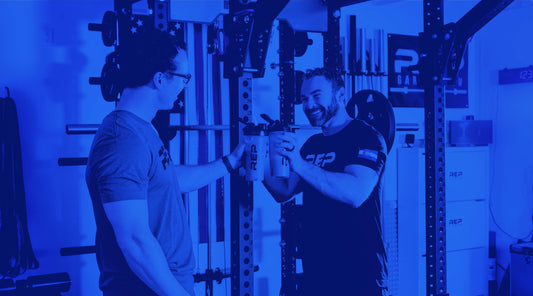
NEWSLETTER SIGNUP
Product launch information, promotions, blogs, and REP news.

